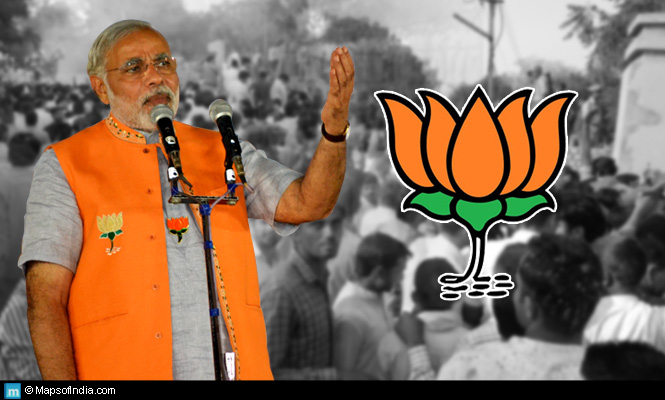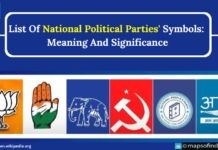 An interesting development in the executive powers of the Modi Government in the recent past is the frequent recourse to the ordinance route that the NDA Government had notoriously resorted to. With the promulgation of an ordinance to amend the Citizenship Act of 1955 last week, the Modi Government promulgated a total of eight ordinances in its 235-day tenure since last May. Roughly calculated, this is an average of one ordinance in less than a month.
An interesting development in the executive powers of the Modi Government in the recent past is the frequent recourse to the ordinance route that the NDA Government had notoriously resorted to. With the promulgation of an ordinance to amend the Citizenship Act of 1955 last week, the Modi Government promulgated a total of eight ordinances in its 235-day tenure since last May. Roughly calculated, this is an average of one ordinance in less than a month.
Ironically enough, this “phenomenal” rate of issuing ordinances of Prime Minister Narendra Modi is equal to the record struck by the then Prime Minister Indira Gandhi, who issued 208 ordinances in her 16-year regime! While such comparisons between the two stalwarts of Indian politics may seem apparently laudatory, the question to ask is, is the ordinance route at all flattering? Is it proper for the Modi to promulgate ordinances on the drop of a hat?
When and why does a Government take the Ordinance path?
Simply put, the ordinance path is a shortcut. When the ruling Government fails to win the support of the majority in passing a particular Bill in Parliament for it to become law, it uses this special power to amend an Act, or to make a temporary ‘bylaw’ if one may call it. In the Indian parliamentary system, an ordinance must be agreed upon, signed and promulgated by the President, upon the request of the Government, to be considered an ordinance. In other words, although an ordinance is a constitutional option, it proves to be an authoritative bylaw, a regulation which the ruling Government commands, in extreme haste, without the need for approval of legislators in Parliament.
Some of the recent ordinances promulgated by the present NDA Government have been an ordinance on insurance, the re-promulgation of the coal ordinance, and the recently-promulgated, albeit problematic, ordinance on land acquisition.
Political leaders and commentators from all quarters have come down upon this strategy of the Modi Government to bring in amendments to laws through ordinances. While the Congress has ridiculed Modi and his men of “governing the country through ordinances”, Arun Jaitley, the Finance Minister in the present NDA regime, has persuaded Modi to go slow on the rapid promulgation of ordinances one after another.
While leaders are divided on this issue, let us briefly look at why the “ordinance raj” of the NDA Government is definitely not a healthy idea.
A critical analysis of NDA’s ‘Ordinance Raj’
Firstly, the issuance of an ordinance must have as its precursor, the bypassing of the Parliament. As is sufficiently clear, the 8-month old Government lacks the majority in the Rajya Sabha, which incidentally was not the situation faced by any of the previous Congress regimes. The Opposition Congress and other significant regional parties like the TMC, which have a strong membership strength in the Rajya Sabha, are simply refusing to side with the BJP in implementing its policies. The Opposition claims that these policies are anti-people, and cater to only the corporate sector in the country.
The land acquisition ordinance, for instance, makes it easy for the Government to acquire land from peasants and poor farmers, for different national purposes such as defence, rural infrastructure and social infrastructural and developmental projects. While the Modi Government promises proper rehabilitation and resettlement of those whose land will be acquired, it remains to be seen, to what extent, the Government aims to fulfil such promises. These and many other factors have led to the BJP lacking a clear majority in Parliament.
Secondly, the BJP’s “ordinance factory” model is indicative of the downturns that the Government has faced economically. If reports are suggestive, many corporate lobbies in the country, who were once ardent supporters of Modi, are now weary of the Government towing the moderate track, and absence of some mighty economic reforms by Modi. Although the Government has increased foreign direct investments (FDI) in some sectors like defence and railways, there is a dire need for investments in other sectors. The NDA’s ordinance route may be an attempt to regain the economic support of the corporate honchos.
Thirdly, recourse to ordinances is slowly yet surely taking a rather dictatorial turn. In the parliamentary model that India follows, it is essential for a Government, any Government, to have the support of Parliament at all times. Bypassing Parliament and heading with its executive powers is not the sign of a healthy and growing Government. History brings to mind the whirlwind promulgation of ordinances that the Congress resorted to in the last few days of the last UPA regime. We know the fate that the Congress suffered immediately after, as a result of the huge unpopularity it faced, both from legislators and the masses.
Is the BJP wave on the wane?
If the protests against the BJP’s ‘ordinance factory’ is any marker to go by, it is true that the Modi wave, which had created ripples in all corners of the Indian democracy, is on a gradual decline. Although as recently-held Assembly elections in Maharashtra and Kashmir indicate, the party continues to ride on its victories. Yet again, the tribal pockets in Jharkhand, which also went to the polls recently, show that the BJP has a long way to go in these regions.
Thus, it may be really too early to conclude anything, if at all, from the ordinance route of Modi. But there is no doubt that Modi and his men must immediately stop the ‘ordinance raj’ and follow the constitutional path of tabling a law, debating on it with Opposition parliamentarians, and reach a consensus on passing it. Otherwise, the descent is all too inevitable.



